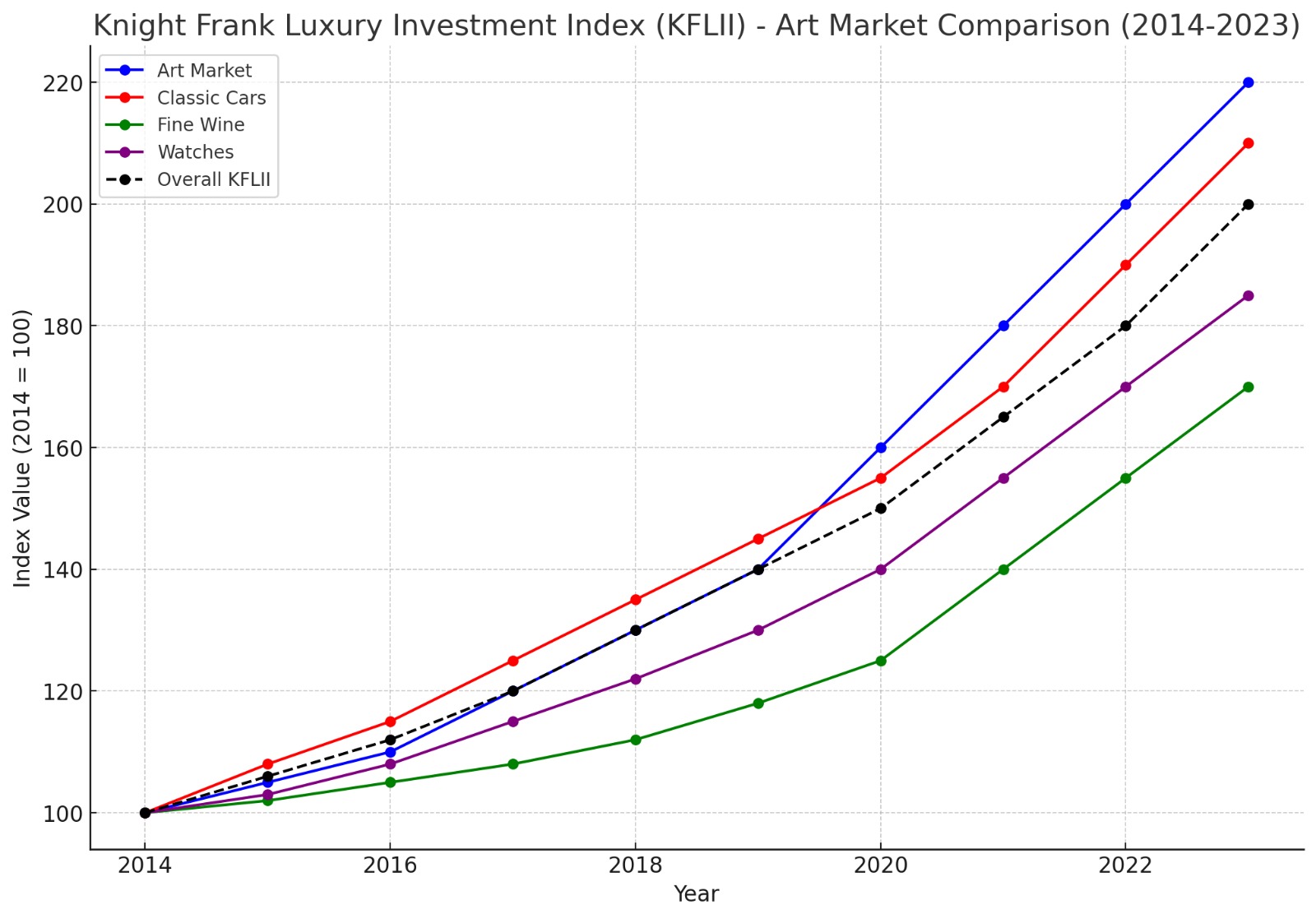At Global Art Club (GAC), we understand that art is not just an emotional and cultural sustenance but also a tangible asset with significant potential. Over the past decade, the art market has demonstrated consistent growth, making it an attractive option. Unlike traditional financial assets, art possesses intrinsic aesthetic and cultural value, often appreciating over time due to its rarity, significance, and demand.
The art market has seen a remarkable increase in value, with global art sales rising steadily. High-profile sales of works by artists like Banksy, Picasso, and Basquiat underscore this trend, showcasing how art can be safe and rewarding.
Known for his provocative and often politically charged street art, Banksy’s works have seen exponential growth in value. A notable example is the “Girl with Balloon” piece, which was sold for £1.04 million at Sotheby’s in 2018 before it shredded itself—ironically increasing its value. Today, Banksy’s pieces are highly sought after, with prices continuing to climb.
A cornerstone of Modern art, Picasso’s works have long been considered blue-chip assets. Over the last decade, his works have consistently broken records at auctions. In 2015, his painting “Les Femmes d’Alger (Version O)” sold for $179.4 million, demonstrating the enduring value of Picasso’s oeuvre.
A leading figure in Contemporary art, Basquiat’s work has seen a dramatic rise in value, especially in recent years. His piece “Untitled” (1982) sold for $110.5 million in 2017, a testament to his growing market and the increasing recognition of his influence on contemporary culture.
Market Trends Over the Last 10 Years
The Knight Frank Luxury Asset Index (KFLII) is an indicator that tracks the performance of various luxury assets, including art, classic cars, fine wine, watches, jewelry, and other collectibles. Art is a significant component of this index, reflecting its value as an Asset in the luxury asset class.
This graph compares the growth of the art market within the Knight Frank Luxury Asset Index (KFLII) against other key luxury assets such as classic cars, fine wine, and watches over the last 10 years.
This comparison highlights the robust performance of the art market as a luxury Asset, making it a compelling option for collectors within the luxury asset space.

Emerging artists offer a unique opportunity to acquire high-quality art at the early stages of an artist’s career before their work gains widespread recognition. This approach can yield significant returns as the artist’s profile rises, and their works become more sought after in the art market.
Once an emerging street artist, Kaws has grown to become a household name, with his works now fetching millions at auction. Early collectors of his work have seen significant returns.
Investing in Kusama’s work in the early 2000s, when she was still gaining international acclaim, would have been a lucrative decision, as her works are now some of the most in-demand in the world.
Discovered by some collectors early in his career, Boafo’s paintings have since skyrocketed in value, with his work being acquired by major institutions and collectors globally.
At Global Art Club, we are committed to supporting emerging artists by providing them with a platform to showcase their work to a global audience. For collectors, we offer expert guidance and curated collections of emerging talent, making it easier to identify and invest in the next big name in the art world.
Investing in emerging artists is not just about financial gain; it’s about being part of the artist’s journey and contributing to the broader art ecosystem. By coming in early, you have the opportunity to acquire unique works that could become highly valuable assets in the future.
Our Invitation
At GAC, we invite you to explore this exciting aspect of the art market with us, where emerging talent meets the discerning eye of the collector, creating a dynamic and potentially rewarding Asset landscape.
Explore the world of art Asset with Global Art Club, where we democratize access to the art market and provide you with the tools and expertise to make informed and rewarding Asset decisions.